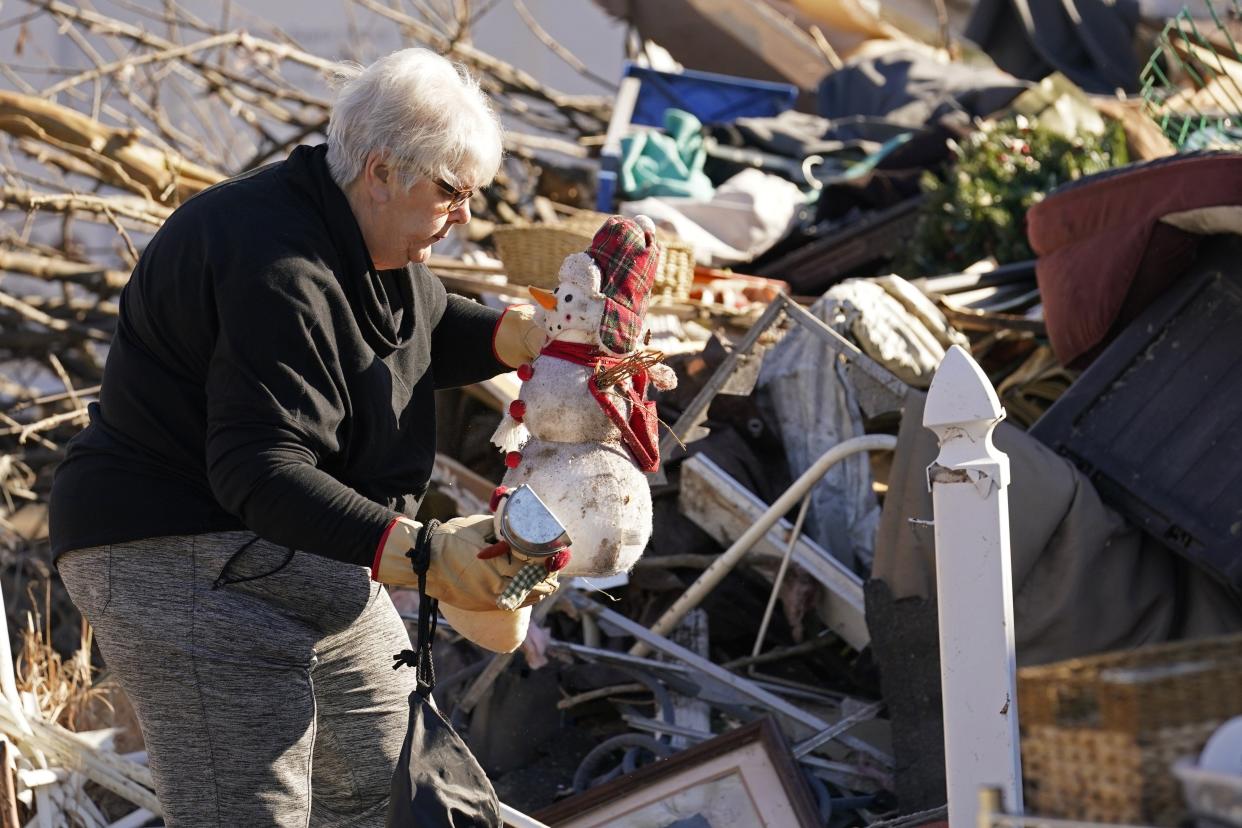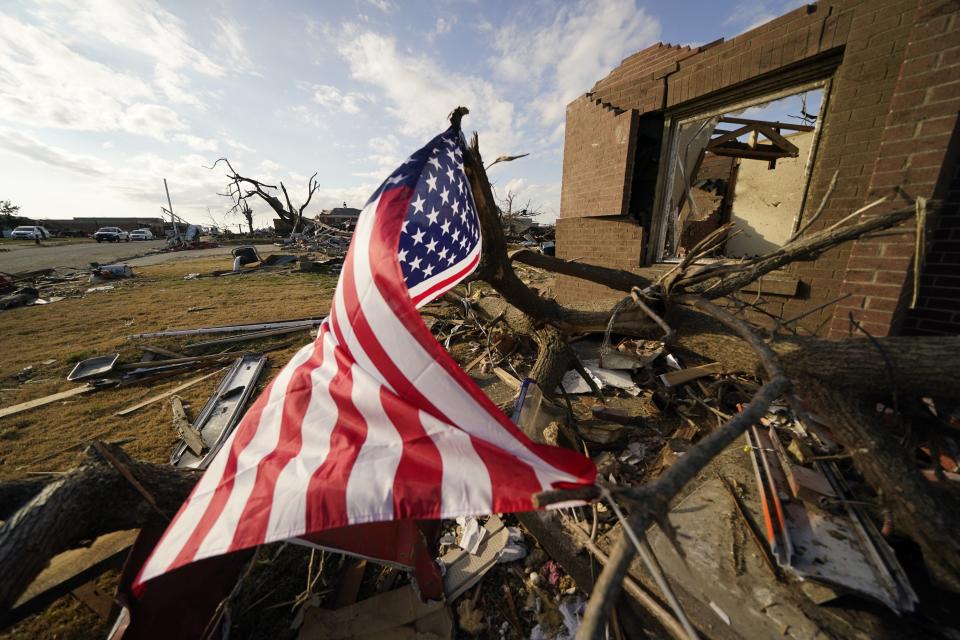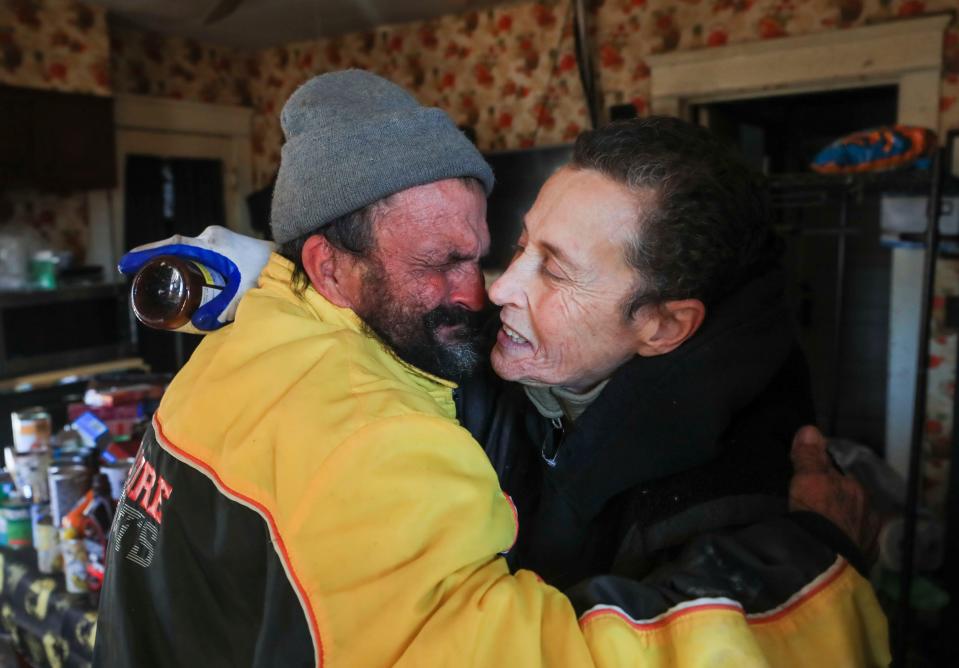Opinion: Tornado damage and loss of life are heartbreaking. National response is heartening.

Tornadoes that swept across the Midwest last week are reminders of the power of nature, fragility of life and how much we need each other.
The wicked winds killed at least 90 people in one of the worst December outbreaks of tornadoes in U.S. history. They hit Arkansas, Illinois, Kentucky, Missouri, Mississippi and Tennessee, leaving an unfathomable trail of destruction.
More: After surviving tornado, Mayfield residents anxiously wonder where they go from here
One survivor, a small business owner in Mayfield, Kentucky, told an NPR reporter that he had "lost a lifetime of work in 30 seconds."
Thousands of people lost everything they owned. They also lost any sense of peace and security in their homes and hometowns.
You've seen the photos and the video. Each scene of devastation appears a lot like the others – like the site of a bomb blast, with houses and churches and businesses all left in unrecognizable piles of bricks and splinters pocked with bits of reminders of the people who once inhabited them.

A teddy bear here, a family Bible there. Crushed cars, a twisted heirloom rocker, family portraits going back decades scattered like leaves. A U.S. flag flying awkwardly but proudly in a shredded tree.

Heartbreaking doesn't begin to express the loss and sorrow.
Heartening is a good word to describe the response from across the country. Volunteers and donations are flooding in.
The Red Cross, Salvation Army, churches, individuals moved to help. They've been showing up in the cities and small towns across six states where people are desperately trying to pick up the pieces.
More than 1,000 residents in the area of Mayfield, Kentucky, alone lost their homes in the tornado – at the onset of winter and two weeks before Christmas.
Angela Legat left her Mayfield apartment with no power, heat or water and a dangerous gas leak. She couldn’t afford a hotel, so she went to the shelter and worried about freezing temperatures. Her daughter played on a computer nearby.
She told a reporter from our sister newspaper, the Louisville Courier Journal, that she hasn’t been able to go to work as a medical assistant, fueling her anxiety. Her daughter kept asking her a hard question: “When can we go back to our house?” she said.
It could be a long time. And many of her neighbors will never go back to their homes. They're gone, wiped away by unimaginably strong winds. Last week, National Weather Service teams were trying to determine whether the tornado – which was on the ground for more than 200 miles – was an EF3 (136-165 mph) or EF5 (more than 200 mph winds).
Ohioans know the wrath of tornadoes. More than 1,000 of them have touched down in Ohio since 1950, including 38 that rated at least F4 on the Fujita scale, meaning major damage with winds reaching above 207 mph. (Weather service officials say the EF Scale, which came into use in 2007, takes into account more variables than the original F Scale did when assigning a wind speed rating to a tornado.)
Just four Ohio tornadoes since 1950 have received the most severe F5 designation. The last time was May 31, 1985, when an F5 tornado tore through northeastern Ohio's Portage and Trumbull counties, claiming 10 lives. There were 10 other tornadoes in Ohio that day.
The “Palm Sunday tornadoes,” so named by the National Severe Storms Laboratory, brought the deadliest single day for Ohio tornadoes since 1950 on April 11, 1965, when 60 people died. Eleven tornadoes spun up that day. The deadliest, in northeastern Ohio, started between Oberlin and Wellington and stretched 22 miles into Cuyahoga County, claiming 18 lives.
The most destructive date for tornadoes in Ohio was on April 3, 1974, when 16 tornadoes touched down, including F5-strength storms in Greene, Clark and Hamilton counties, west of Columbus, that led to 39 deaths and 1,340 injuries. The storms caused more than $250 million in property damage. Heaviest hit, as many will remember, was Xenia, where an F5 tornado with winds between 261 and 318 mph decimated nearly half of the city. One hospital was left standing, and it was packed with nearly 2,000 people.
As the people of Xenia showed us then, and the people of Dayton showed us when tornadoes hit there on Memorial Day weekend 2019, this is a nation of resilient, persevering people.
The people of Arkansas, Illinois, Kentucky, Missouri, Mississippi and Tennessee will prevail – with help from their friends from across the United States who realize in moments like this how much we need each other.
Ohio is responding, and yet, as we settle into our comfortable homes for the holidays, it's important to remember that recovery from such a monumental disaster is a marathon across many months and years. They'll need our help for a long time to come.
Here's how you can help: Go to redcross.org, call 1-800-RED-CROSS or text REDCROSS to 90999. And see more local options in Kentucky by going to this page: https://bit.ly/31X22ec.
And if you can't send money, send prayers.
Alan D. Miller is editor of The Dispatch.
amiller@dispatch.com
@dispatcheditor
This article originally appeared on The Columbus Dispatch: Opinion: When tornadoes hit, Americans put aside differences and help

